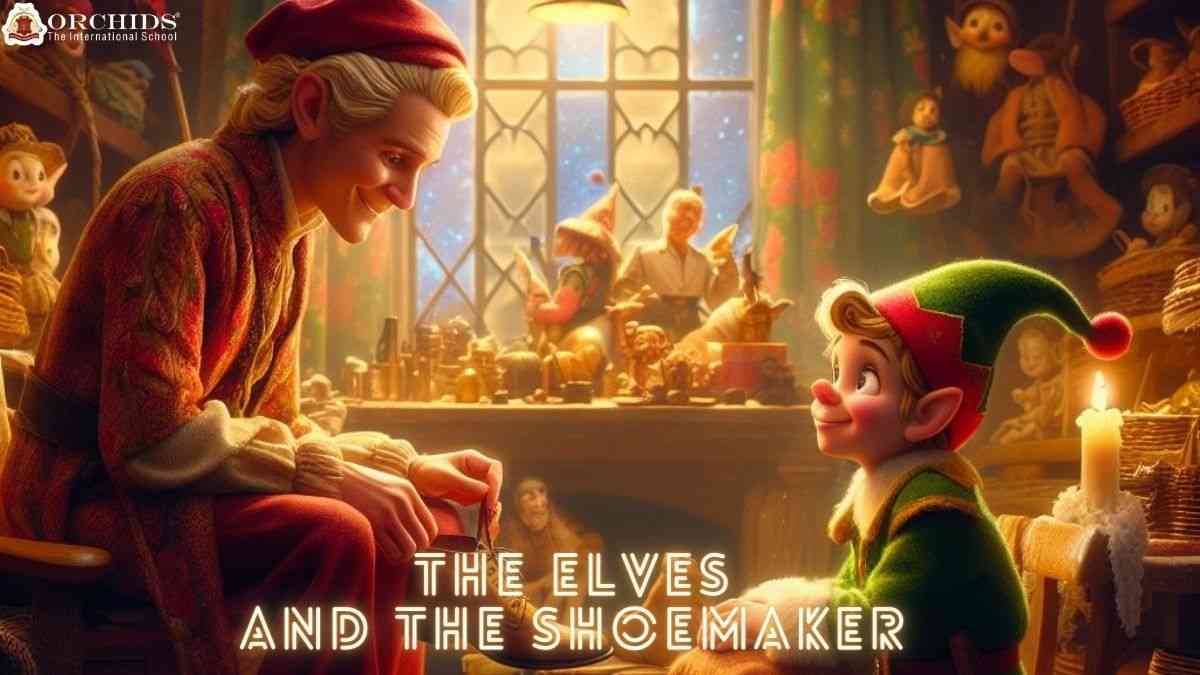The Elves and the Shoemaker Story

The Elves and the Shoemaker Story For Kids
Once upon a time in a quaint little village, there lived a poor shoemaker. He was known far and wide for his excellent craftsmanship but struggled to make ends meet. The shoemaker and his wife were kind-hearted, and despite their financial troubles, they always shared whatever they had with those less fortunate.
One evening, as the shoemaker sat in his tiny shop, he realized he had only enough leather left to make one last pair of shoes. Saddened by the thought that this might be the end of his beloved trade, he carefully cut out the pieces for the shoes and placed them on his work table.
That night, with heavy hearts, the shoemaker and his wife went to bed, unsure of what the future held for them. Little did they know that something magical was about to happen.
As the clock struck midnight, the shoemaker's workshop was filled with a soft glow, and to his amazement, he discovered that the pieces of leather had transformed into a beautiful pair of shoes. The craftsmanship was so exquisite that the shoemaker couldn't believe his eyes. He knew he could sell these shoes for a good price.
The next day, the shoemaker displayed the shoes in his shop, and they were sold almost immediately. With the money, he was able to buy more leather to make additional pairs of shoes. Again, he cut out the pieces and left them on the worktable before going to bed.
Once more, the magical elves visited the shoemaker's shop at midnight. They worked tirelessly, turning the leather into finely crafted shoes. Each night, the elves continued to help the shoemaker, ensuring that he always had beautiful shoes to sell.
Word spread about the shoemaker's miraculous shoes, and soon he became prosperous. The shoemaker and his wife were overjoyed and grateful for the mysterious assistance they received. However, they couldn't help but wonder who their mysterious helpers were.
One evening, the shoemaker's wife had an idea. She decided to make tiny, exquisite clothes for the elves as a gesture of gratitude. The shoemaker and his wife placed the clothes on the worktable alongside the cut leather.
That night, as the elves arrived to do their work, they found the clothes and were delighted. From that day forward, the magical elves continued to help the shoemaker, and they were never seen again. The shoemaker and his wife lived a happy and prosperous life, always remembering the mysterious helpers who had turned their fortunes around.
Moral of the story :
"The Elves and the Shoemaker" imparts a moral lesson on gratitude, diligence, and generosity. The story emphasizes being thankful for unexpected help, symbolized by the shoemaker leaving clothes for the elves. Through hard work and dedication, the narrative promotes the idea that perseverance leads to prosperity. The theme of generosity is evident in the shoemaker's willingness to share, and the story underscores the importance of recognizing and appreciating kindness, whether from magical beings or others, conveying a message of interconnectedness between generosity and success.
Frequently Asked Questions about "The Elves and the Shoemaker"
1. Who wrote "The Elves and the Shoemaker"?
This question provides essential information about the authorship of the story, establishing its origin and the cultural context associated with it.
2. Which other stories are similar to "The Elves and the Shoemaker"?
Exploring similar stories allows readers to discover related folktales, expanding their knowledge of the broader cultural and thematic context in which "The Elves and the Shoemaker" exists.
3. Where can I read "The Elves and the Shoemaker"?
Providing information on where to access the story enables readers to explore the original narrative and delve into the cultural richness of fairy tales.
4. Are there any adaptations of this story in literature or film?
This question acknowledges the story's cultural impact, pointing to the various ways it has been retold or reimagined in different artistic mediums, attracting a wider audience.
5. Is there a specific lesson or moral in the story?
Understanding the moral or lesson of the story helps readers grasp the deeper meaning and educational value of "The Elves and the Shoemaker," making it more than just a narrative for entertainment.
Other Related Sections
NCERT Solutions | Sample Papers | CBSE SYLLABUS| Calculators | Converters | Stories For Kids | Poems for kids| Learning Concepts I Practice Worksheets I Formulas | Blogs | Parent Resource

